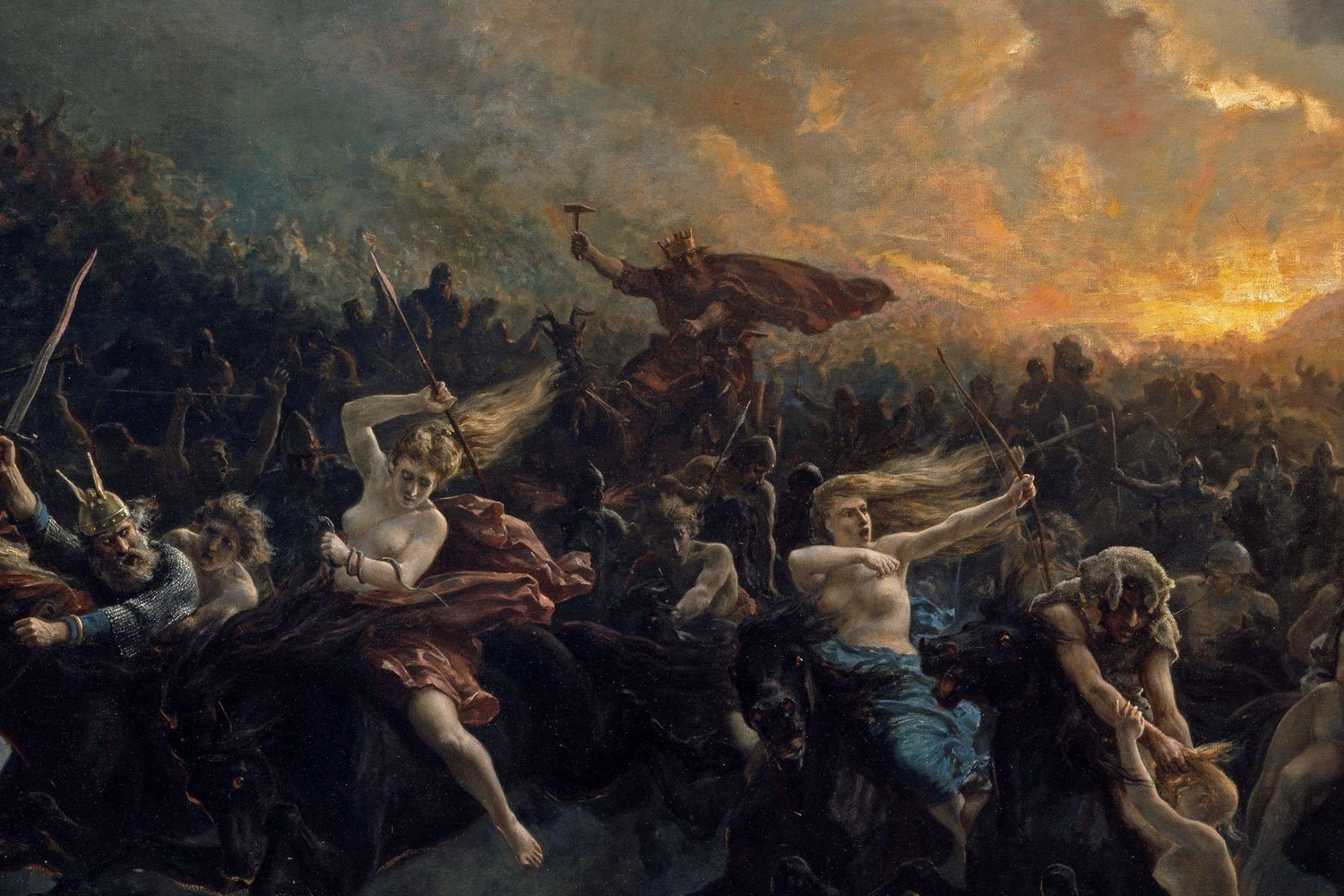Norse mythology is a fascinating realm of ancient beliefs held by the Germanic peoples, filled with extraordinary stories about gods, giants, and magical creatures. These tales weave together nature, courage, betrayal, and destiny, creating a rich and complex picture of the cosmos. Legendary figures such as Odin, Thor, and Loki have inspired modern literature, cinema, and games. Many elements of Norse mythology have subtly permeated our culture. Here are some interesting facts about Norse mythology you may not have known.
- Odin, one of the chief gods, sacrificed one of his eyes to gain wisdom. He threw it into Mimir’s well in exchange for a drink that would reveal the secrets of the universe. This act represents the idea of sacrificing comfort for knowledge.
- The Norse universe is divided into nine realms connected by the great tree Yggdrasil. At its top lies Asgard, home of the gods, while at its base is Niflheim, the realm of ice and darkness. Yggdrasil unites all levels of existence in a cosmic balance.
- Thor, the god of thunder and storms, is famous for his hammer Mjölnir, which always returns to his hand. The hammer is a symbol of strength, protection, and fertility. Thor defends the world from chaotic forces and monsters.
- Loki is a cunning and shape-shifting god who often shifts between aiding the gods and causing trouble. He can take on many forms, including animals and women. His unpredictable nature often sets major events into motion.
- The Valkyries are warrior maidens who choose the slain heroes and take them to Valhalla. There, the warriors prepare for the final battle known as Ragnarök. Valkyries serve Odin and act as his agents on the battlefield.
- Freyja, the goddess of love and beauty, can travel between worlds with the help of a falcon-feather cloak. She receives half of the fallen warriors in her own realm, Folkvangr. Freyja is one of the most powerful and revered female figures in Norse lore.
- Ragnarök is the Norse end-of-the-world prophecy in which gods and giants engage in a final battle. Odin and Thor perish in this fight, but a new world will emerge afterward. This reflects the cyclical view of time in Norse belief.
- Hel, the daughter of Loki, rules the realm of the dead also called Hel. It is the destination for those who died of illness or old age. Her realm is cold and grim, a stark contrast to the heroic halls of Valhalla.
- Jörmungandr is a massive serpent that encircles the world, biting its own tail. It represents infinity and the endless cycle of existence. During Ragnarök, it will fight Thor in a deadly confrontation.
- Fenrir, a monstrous wolf and another child of Loki, was chained by the gods out of fear for his strength. Prophecies claimed he would kill Odin during Ragnarök. Fenrir embodies the concept of inevitable fate.
- The oldest sources of Norse mythology are the “Eddas,” written down in the 13th century. Before that, these stories were preserved through oral tradition. These texts remain the primary source of our understanding of Norse beliefs.
- Norse mythology is deeply connected to nature and the changing seasons. The gods often represent natural phenomena like storms, harvests, and death. This reflects the worldview of ancient Scandinavians who lived closely with the environment.
- Some heroes are demigods, born of gods and humans, possessing great power yet destined to die. Their stories are filled with bravery, tragedy, and adventure. These figures are central to many sagas and heroic poems.
- Dwarves were master craftsmen who created magical objects for the gods. They forged Mjölnir, the golden ring Draupnir, and the ship Skidbladnir. Living underground, they possessed secret knowledge of the earth.
- The oceans surrounding the nine worlds were believed to be home to terrifying sea monsters and represented chaos. Sailing these waters required courage and tested a warrior’s spirit. These journeys were metaphors for personal trials.
- The days of the week in English are influenced by Norse mythology. For example, Thursday comes from Thor’s Day and Wednesday from Woden’s Day, referring to Odin. This shows how Norse beliefs have left a lasting cultural mark.
These fascinating facts show how rich and varied Norse mythology truly is. Its characters, symbols, and narratives have survived for centuries and continue to inspire people today. These stories entertain but also offer deep insights into the human experience. Norse mythology remains a timeless treasure of northern heritage.





